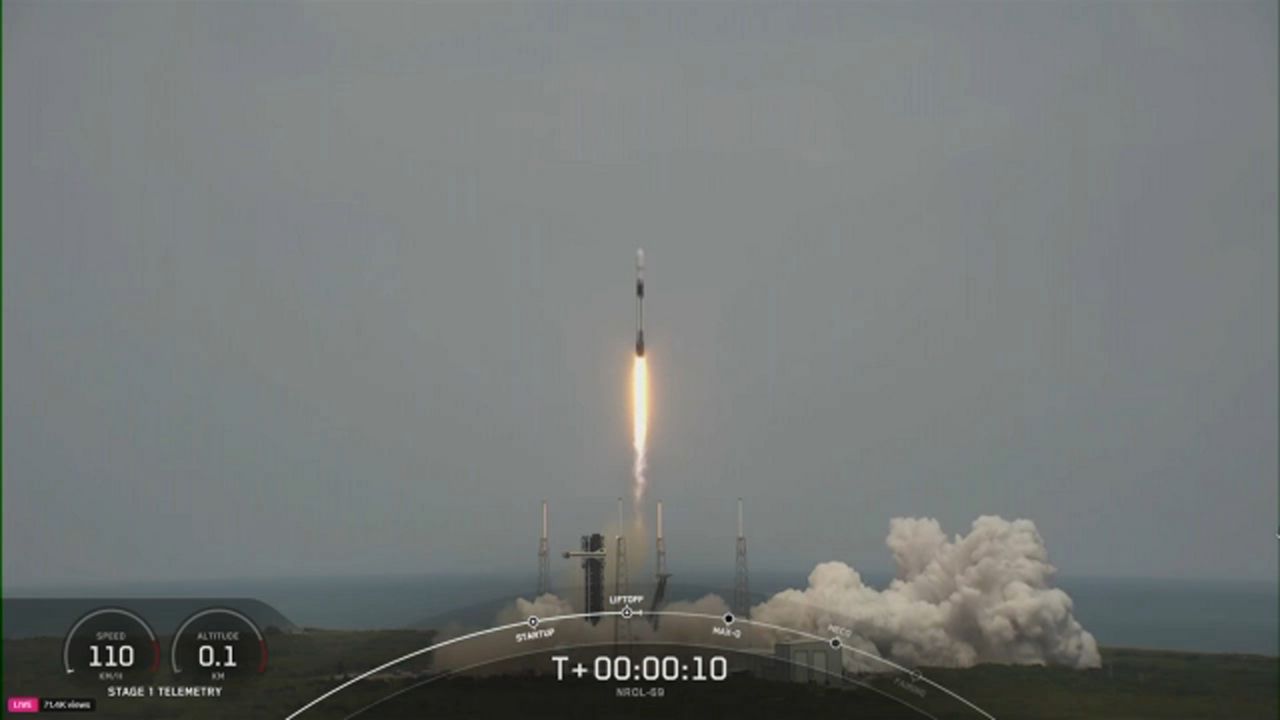KENNEDY SPACE CENTER, Fla. — A SpaceX Falcon Heavy booster rocket exploded hundreds of miles off the coast of Cape Canaveral as it tried to land on the company's drone ship floating in the Atlantic, sending flames shooting into the air.
- SpaceX Falcon Heavy rocket launched at 2:30 a.m. ET
- 1 of 3 booster rockets exploded as it tried to land on drone ship
- STP-2 mission carried payloads for DOD, NASA, NOAA
- RELATED:
One of @SpaceX #FalconHeavy booster rockets exploded hundreds of miles off the coast of Cape Canaveral after it missed a landing on a drone ship, sending flames into the air, reports @JerryHume https://t.co/3htaYrlY04 pic.twitter.com/mx8XlQpDPv
— Spectrum News 13 (@MyNews13) June 25, 2019
Despite the issue, SpaceX still called the early Tuesday launch of its Falcon Heavy rocket — the third liftoff of the world's most powerful operational rocket — a success. The rocket roared off from Launch Complex 39A at Kennedy Space Center at 2:30 a.m. Eastern Time.
The launch was pushed back three hours because of a ground hydraulic issue that the company said it resolved.
This was the Falcon Heavy's first nighttime launch.
The LAUNCH, the LANDINGS, the EXPLOSION. We've got complete #SpaceX #FalconHeavy launch coverage this morning on @MyNews13 & @BN9. pic.twitter.com/81Pf1DnptZ
— Jerry Hume (@JerryHume) June 25, 2019
On board the Falcon Heavy were 24 satellites for the Department of Defense, NASA, NOAA, and other educational institutions.
What made this mission so challenging was that the rocket was deploying the 24 satellites at three separate orbits. After the second-stage rocket separated and headed to space, the three first-stage boosters headed back to Earth.
The two side boosters successfully landed on land at Cape Canaveral Air Force Station about 8 minutes after launch. The center, main core booster headed for the drone ship, floating about 700 miles off our coast — about twice as far as it usually it is for a sea landing because of the requirements of the mission.
But the main booster core missed its mark and exploded in the ocean.
SpaceX CEO Elon Musk on Twitter said the landing was a long shot, because the booster was coming in about 4 times faster than a rifle bullet.
SpaceX is now 0-for-3 in recovering core boosters. The company was not able to recover the core booster in the Falcon Heavy's two previous missions. Last year, the core booster exploded on the drone ship. Earlier this year, the booster touched down on the ship, but then tipped over in rough seas.
SpaceX says one of its boats in the ocean was able to capture half of the nose cone, or payload fairing. SpaceX likes to recover its boosters and fairings so it can to resuse them to drive down the cost of launches.
The company said that recovery of the rocket parts is secondary to a mission and the primary mission was delivering the 24 satellites to the proper orbits, which it said was going as planned.









